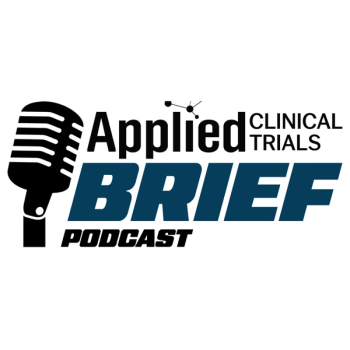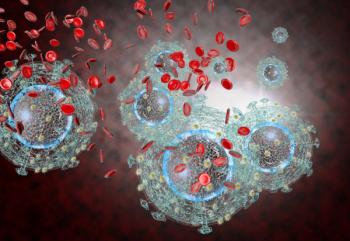
OASIS Trials Show Efficacy of Elinzanetant in Reducing Hot Flashes in Postmenopausal Individuals
Elinzanetant was found to significantly lower the frequency and severity of moderate to severe vasomotor symptoms with statistically significant improvements in sleep disturbances and menopause-related quality of life.
In the pivotal Phase III OASIS 1 and 2 trials, elinzanetant achieved a statistically significant decrease in the frequency and severity of severe vasomotor symptoms (VMS), also called hot flashes, in postmenopausal individuals compared to placebo.1-4 In the study, published by The Journal of the American Medical Association, elinzanetant met all of the primary endpoints by significantly lowering the frequency and severity of moderate to severe VMS at weeks four and 12, as well as key secondary endpoints that included a statistically significant improvement in sleep disturbances and menopause-related quality of life.
“Due to individual risk factors, medical contraindications or personal preference, there is an unmet need for additional safe and effective non-hormonal treatments for vasomotor symptoms associated with menopause that may also improve sleep disturbances and quality of life,” JoAnn Pinkerton, MD, professor and director of Midlife Health at UVA Health, said in a press release. “These positive results from OASIS 1 and 2 reinforce elinzanetant as a potential non-hormonal treatment option for women experiencing vasomotor symptoms in menopause.”4
Elinzanetant is the first dual neurokinin-1 and 3 (NK-1 and 3) receptor antagonist to reach late-stage development for the non-hormonal treatment of moderate to severe VMS linked to menopause. The oral, once daily medication has been found to modulate estrogen-sensitive neurons in the the brain that can cause hyperactivation of the thermoregulatory pathway as estrogen levels decrease, which subsequently impacts body heat control mechanisms and leads to VMS.4
“Elinzanetant is a nonhormonal compound in development for the treatment of VMS associated with menopause that specifically targets both NK-1 and NK-3 receptors,” the study authors wrote. “Based on clinical data, it was hypothesized that the dual inhibition of NK-1 and NK-3 receptors would reduce VMS and may have an effect on sleep disturbances associated with menopause. Indeed, elinzanetant demonstrated significant reductions in VMS frequency and severity compared with placebo, as well as improvements in different aspects of sleep and menopause-related quality of life in the phase 2b SWITCH-1 trial.”1
The multicenter, multinational, double-blind, randomized, placebo-controlled OASIS 1 and 2 trials enrolled postmenopausal individuals aged 40 to 65 years who are experiencing 50 or more moderate to severe VMS symptoms across seven days. Across both studies, 309 (78.0%) patients in OASIS 1 and 324 (81.0%) patients in OASIS 2 completed the trial. Patients were administered once daily oral elinzanetant at a dose of 120 mg for 26 weeks or matching placebo for 12 weeks followed by elinzanetant 120 mg for 14 weeks. Investigators used an electronic hot flash daily diary to measure the trial’s primary endpoints of mean change in frequency and severity of moderate to severe VMS from baseline to weeks four and 12.
The results showed that elinzanetant significantly lowered VMS frequency at week four (OASIS 1: −3.3 [95% CI, −4.5 to −2.1], P < .001; OASIS 2: −3.0 [95% CI, −4.4 to −1.7], P < .001) and at week 12 (OASIS 1: −3.2 [95% CI, −4.8 to −1.6], P < .001; OASIS 2: −3.2 [95% CI, −4.6 to −1.9], P < .001), while also reducing VMS severity at week four (OASIS 1: −0.3 [95% CI, −0.4 to −0.2], P < .001; OASIS 2: −0.2 [95 CI, −0.3 to −0.1], P < .001) and week 12 (OASIS 1: −0.4 [95% CI, −0.5 to −0.3], P < .001; OASIS 2: −0.3 [95% CI, −0.4 to −0.1], P < .001). In addition to improvements in the frequency of severity of hot flashes, elinzanetant was also found to improve sleep disturbances and menopause-related quality of life at week 12.
In terms of safety, the drug showed a tolerable profile, with the most frequently reported adverse events being headache and fatigue. Those who switched from placebo to elinzanetant after week 12 reported a few cases of headache and fatigue, according to the study authors.
“OASIS 1 and 2 were 2 similar pivotal phase 3 trials performed across different sites and countries that separately demonstrated the efficacy of elinzanetant for the treatment of VMS associated with menopause,” the study authors concluded. “Elinzanetant demonstrated a rapid improvement in VMS frequency at 1 week and robust improvements in VMS severity, sleep disturbances, and menopause-related quality of life, and has a favorable safety profile. Elinzanetant has the potential to provide a well-tolerated and efficacious nonhormonal treatment option to address the unmet health needs of many menopausal individuals with moderate to severe VMS.”1
References
1. Pinkerton JV, Simon JA, Joffe H, et al. Elinzanetant for the Treatment of Vasomotor Symptoms Associated With Menopause: OASIS 1 and 2 Randomized Clinical Trials. JAMA. Published online August 22, 2024. doi:10.1001/jama.2024.14618
2. A Study to Learn More About How Well Elinzanetant Works and How Safe it is for the Treatment of Vasomotor Symptoms (Hot Flashes) That Are Caused by Hormonal Changes Over 26 Weeks in Women Who Have Been Through the Menopause (OASIS-1). ClinicalTrials.gov. June 27, 2024. Accessed August 26, 2024.
3. A Study to Learn More About How Well Elinzanetant Works and How Safe it is for the Treatment of Vasomotor Symptoms (Hot Flashes) That Are Caused by Hormonal Changes Over 26 Weeks in Women Who Have Been Through the Menopause (OASIS-2). ClinicalTrials.gov. May 29, 2024. Accessed August 26, 2024.
4. The Journal of American Medical Association (JAMA) publishes Elinzanetant Phase III data. News release. Bayer. August 22, 2024.
Newsletter
Stay current in clinical research with Applied Clinical Trials, providing expert insights, regulatory updates, and practical strategies for successful clinical trial design and execution.





.png)



.png)



.png)
.png)
